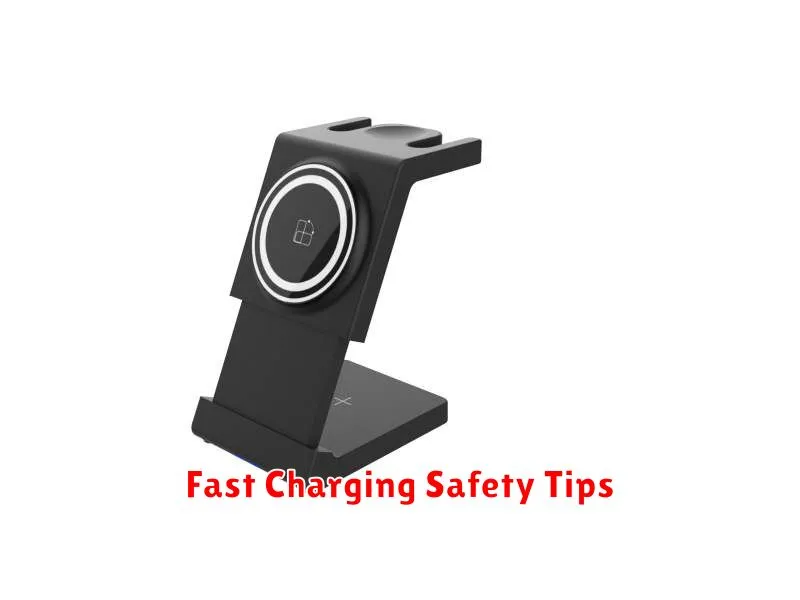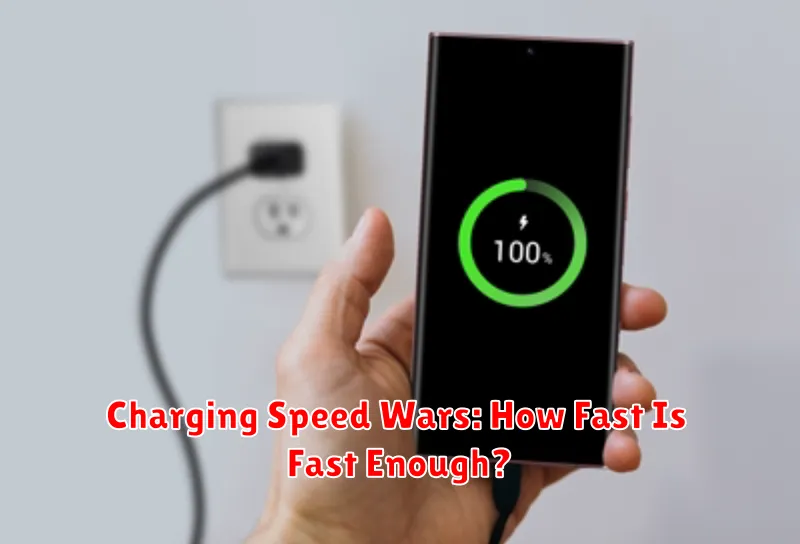The charging speed of our devices has become a major factor in our increasingly connected world. From fast charging smartphones to rapid charging electric vehicles, the demand for quicker power delivery is constantly rising. But amidst this charging speed war, a crucial question arises: how fast is fast enough? This article delves into the current landscape of charging technologies, exploring the advancements in fast charging and rapid charging solutions across various devices. We will examine the benefits and drawbacks of different charging speeds, considering factors such as battery health, efficiency, and convenience.
Join us as we explore the ongoing charging speed wars and discuss the implications of ever-increasing charging speeds. We will analyze the trade-offs between speed and longevity, considering the impact on battery lifespan and overall device performance. Ultimately, we aim to address the question of how fast charging and rapid charging truly need to be to meet consumer expectations without compromising the long-term health and usability of our devices. Are we reaching a point of diminishing returns, or is there still room for significant improvement in the quest for the ultimate charging speed?
What Is Fast Charging?
Fast charging, also known as rapid charging, refers to any charging technology that delivers power to a compatible device at a rate significantly higher than standard charging speeds. This allows electronic devices, primarily smartphones, tablets, and laptops, to replenish their battery capacity in a considerably shorter time.
The technical definition generally revolves around charging power output exceeding 15 watts. While standard charging typically operates at 5 watts or 10 watts, fast charging technologies can range from 18 watts to over 100 watts. Higher wattage typically translates to faster charging speeds, allowing users to gain substantial battery percentage in minutes rather than hours.
Various standards and protocols exist for fast charging, often developed by individual device manufacturers. This can lead to incompatibility issues where a charger designed for one brand might not deliver optimal fast charging speeds for another. Understanding these different standards is crucial for leveraging the full potential of fast charging technology.
Wattage and Charging Speed
Wattage is a measure of power, specifically the rate at which electrical energy is used or transferred. In the context of charging, higher wattage translates to a faster charging speed. Think of it like a water pipe: a wider pipe (higher wattage) allows more water (electricity) to flow through in a given time.
Voltage and amperage also play a role. Wattage is calculated by multiplying voltage and amperage (Watts = Volts x Amps). A charger with a higher voltage or amperage output will deliver more power and therefore charge a device faster.
However, the device itself also has a maximum charging speed. Even if a charger offers a high wattage output, the device will only accept power up to its limit. This limit is built into the device’s hardware and software for safety and battery longevity.
Wired vs Wireless Charging
Choosing between wired and wireless charging often comes down to convenience versus speed. Wired charging, using cables like USB-C or Lightning, offers significantly faster charging speeds. This is due to the direct physical connection, allowing for higher power delivery.
Wireless charging, while more convenient for quickly placing a device on a charging pad, is generally slower. This is because of energy loss during the wireless power transfer process. However, wireless charging technology continues to improve, closing the gap with wired options.
Fast Charging Safety Tips

While fast charging is convenient, prioritizing safety is crucial. Use only certified chargers and cables designed for your device. Counterfeit or substandard accessories can pose serious risks.
Avoid charging overnight. While modern devices have safeguards, prolonged high-voltage charging can generate excess heat. Unplug your device once it reaches 100%.
Monitor temperature. If your device or charger becomes unusually hot during fast charging, disconnect immediately. This could indicate a problem with the charger, cable, or the device’s battery.
Charge in a well-ventilated area. Do not cover your device or the charger with fabric or other materials, as this can trap heat and create a fire hazard.
Impact on Battery Health
A key consideration in the charging speed wars is the impact on long-term battery health. Faster charging technologies, while convenient, generate more heat. This elevated temperature can contribute to accelerated battery degradation.
Higher temperatures stress the battery, potentially reducing its overall lifespan and capacity over time. While battery management systems work to mitigate these effects, the cumulative impact of frequent fast charging can still be a concern. Balancing charging speed with longevity remains a challenge for manufacturers.
Real-World Speed Tests
Moving beyond theoretical charging rates, real-world tests provide crucial insights into actual charging performance. Environmental factors such as temperature and battery state of charge significantly influence charging speeds.
Testing methodologies vary, impacting results. Some tests prioritize consistency, using controlled environments. Others focus on replicating typical user experiences, incorporating varied temperatures and initial battery levels.
Analyzing real-world data reveals the discrepancy between advertised speeds and achievable rates. Factors like cable quality and the vehicle’s internal charging management system also contribute to variations.
Charging Standards by Brand
Different brands have adopted varying charging standards, creating a somewhat fragmented landscape for consumers. Understanding these differences is crucial for selecting compatible chargers and maximizing charging speeds.
Tesla utilizes its proprietary Supercharger network, offering incredibly fast charging speeds for its vehicles. Other manufacturers often rely on the Combined Charging System (CCS) standard which is becoming increasingly prevalent. CHAdeMO is another standard, primarily used by Japanese automakers, while GB/T is dominant in China.
Future Charging Technologies
Beyond the current advancements in fast charging, research and development are exploring even more rapid and efficient methods. Solid-state batteries are a promising avenue, potentially offering significantly faster charging speeds and increased safety due to their non-flammable nature.
Wireless charging technology is also evolving, with advancements focusing on dynamic charging, allowing electric vehicles to charge while in motion. This could revolutionize long-distance travel by eliminating charging stops.
Other explorations include extreme fast charging technologies that aim to deliver hundreds of miles of range in mere minutes. While still in early stages, these technologies hold the potential to reshape the charging landscape and further accelerate the adoption of electric vehicles.
Portable Chargers and Adapters
Portable chargers have become essential for maintaining power on the go. Their capacity, measured in milliampere-hours (mAh), determines how many times they can charge a device. A higher mAh rating generally translates to more charges. Output power (watts) dictates charging speed. Look for chargers supporting fast charging protocols like Power Delivery (PD) or Quick Charge (QC) for compatible devices.
Wall adapters, often overlooked, play a crucial role in charging speed. Using a low-power adapter with a high-power cable won’t deliver optimal charging speeds. Ensure your adapter’s wattage matches or exceeds your device’s requirements. Consider adapters with multiple ports for charging multiple devices simultaneously.
Choosing the Right Charger

With the plethora of charging standards available, selecting the right charger can be confusing. Compatibility is paramount. Ensure the charger’s output voltage and amperage align with your device’s requirements. Using an incompatible charger can lead to slow charging or even damage your device.
Consider your charging needs. Do you need a rapid charge for daily top-ups or a slower overnight charge? High-wattage chargers provide faster charging speeds, while lower wattage options are suitable for overnight use.
Portability is another factor. Smaller, lighter chargers are ideal for travel, while larger, more powerful chargers may be better suited for home use.

